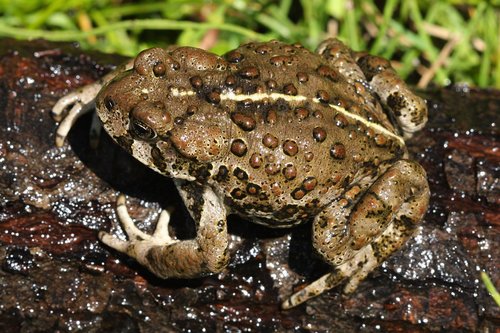
Western Toad
The Western Toad, Anaxyrus boreas, is a nocturnal amphibian with warty, toxin-secreting skin that thrives across western North America's varied habitats. Its distinctive threat-deterring secretion and role in insect control underscore its ecological importance.
9 years
Lifespan
Least Concern
Conservation Status
Decreasing
Population Trend
Distribution Range of the Western Toad
Anaxyrus boreas, commonly known as the Western Toad, is native to western North America. Its geographical distribution includes regions in the United States and Canada, primarily found from southeastern Alaska through western Canada, including British Columbia, and throughout the western United States down to Northern Baja California in Mexico.
Western Toad's Habitat
Environmental Conditions
The Western Toad inhabits a variety of environments, typically favoring areas near water sources such as ponds, lakes, and streams, which are essential during their breeding season. They can be found in diverse habitats including forests, grasslands, and deserts. The species is adapted to various climate conditions, from coastal rainforests to arid desert landscapes.
Ecological Niche
Western Toads are amphibians that occupy a role as both predator and prey within their ecosystems. They primarily feed on insects and other small invertebrates, helping to control insect populations. In turn, they are prey for larger animals, including birds, snakes, and mammals. The presence of Western Toads in a habitat can be indicative of a healthy, balanced ecosystem.
Copyright @ Nature Style Limited. All Rights Reserved.
 English
English